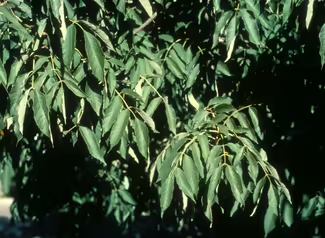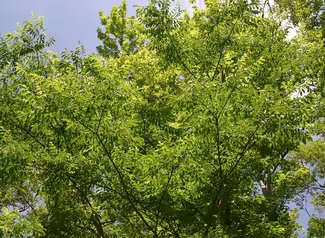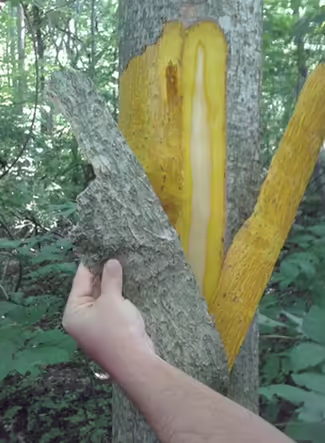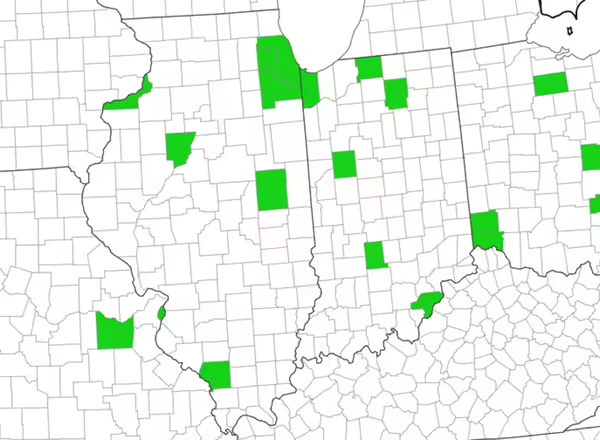
Invasive Amur Corktree
Introduced as an ornamental tree, the shade-tolerant Amur Corktree (Phellodendron amurense) invades forests and prevents native trees from growing. Download our Amur corktree infosheet.
History of Amur Corktree
Amur corktree was initially introduced from Asia to North America in the 1850s as an ornamental and is still being used as an ornamental tree today.
Regulation of Amur Corktree
Amur corktree is not regulated in Illinois. It is regulated in Maine, Maryland, Massachusetts, New York, New Hampshire, and Wisconsin and is on known invasive lists in Indiana, Kentucky, Maryland, New Jersey, and Pennsylvania.

Amur corktree invades forest edges and canopy gaps, affects tree regeneration in forests, and displaces native vegetation. Amur corktree are shade-tolerant and can persist in the understory of closed-canopy forests. They have been increasingly found invading disturbed forests across Illinois and the eastern U.S., especially near urban and suburban areas where it has been introduced as an ornamental and street tree. Birds consume the fruits and spread seeds to new areas.
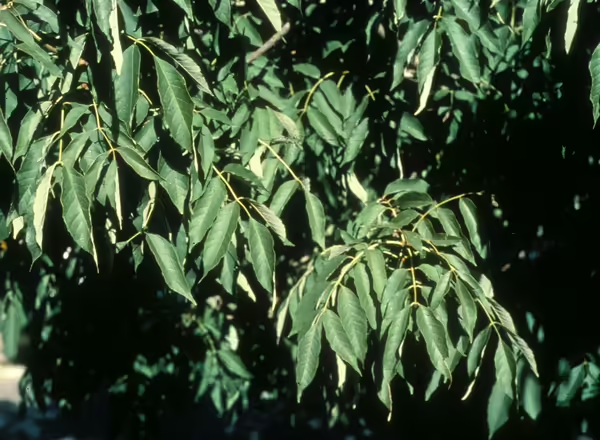
Amur corktree is a deciduous tree growing up to 50 feet in height with corky bark that is spongy to the touch, especially on more mature trees. The leaves of Amur corktree are opposite and pinnately compound with 5 to 13 leaflets and entire margins. The fruits of Amur corktree are drupes 0.25-0.5 inches in diameter that are initially green and turn to black at maturity around June or July. Another identifying characteristic is the bright yellow inner bark that can be revealed by scraping the outer bark.

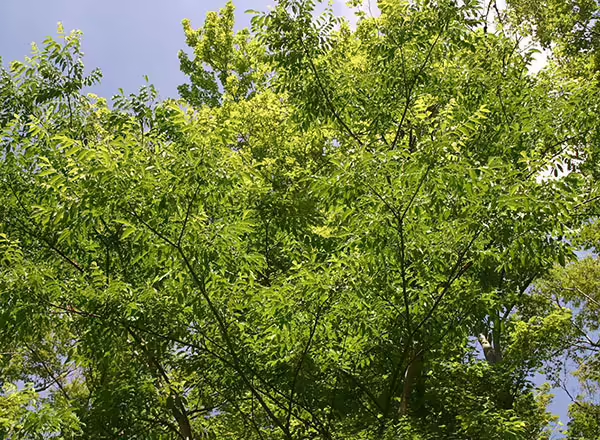
Use alternative native species in landscaping that benefit native wildlife and are not invasive.
How to Control Amur Corktree
- Mechanical: Small seedlings may be hand-pulled, especially in moist soils.
- Chemical: Always read and follow the herbicide label before initiating treatment. If seeds are present on the plant, take care not to spread them during control.
- Leaves can be treated with a 5% v/v triclopyr amine or 2% v/v glyphosate solution while actively growing.
- Basal Bark: For smaller plants less than 4 inches diameter, a basal bark application may be effective. Apply a triclopyr ester formulation at a 20% to 25% v/v rate, mixed with basal oil, to the lowest 15 inches of the stem.
- Cut Stump: Resprouts vigorously if herbicide is not applied to cut stems. Apply triclopyr amine in water or ester in oil at a 20 to 25% v/v rate or glyphosate at a 50 to 100% v/v rate in water within 10 minutes of cutting.
For more information, explore Management of Invasive Plants and Pests of Illinois.
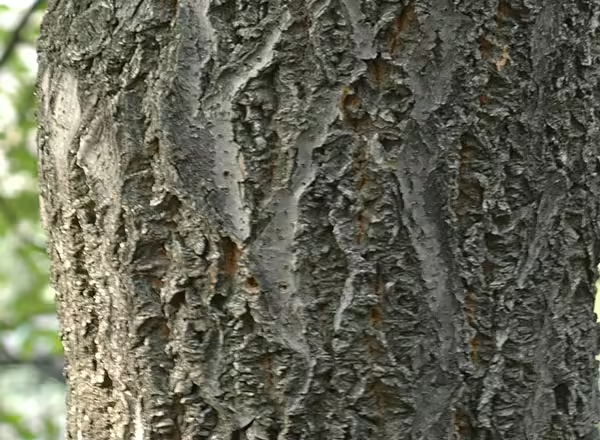
- EDDMapS Distribution Map
- Invasive Plant Atlas of the United States
- Plant Conservation Alliance’s Alien Plant Working Group: Fact Sheet: Amur corktre
- River to River Cooperative Weed Management Area: Ecology and control of Amur corktree
